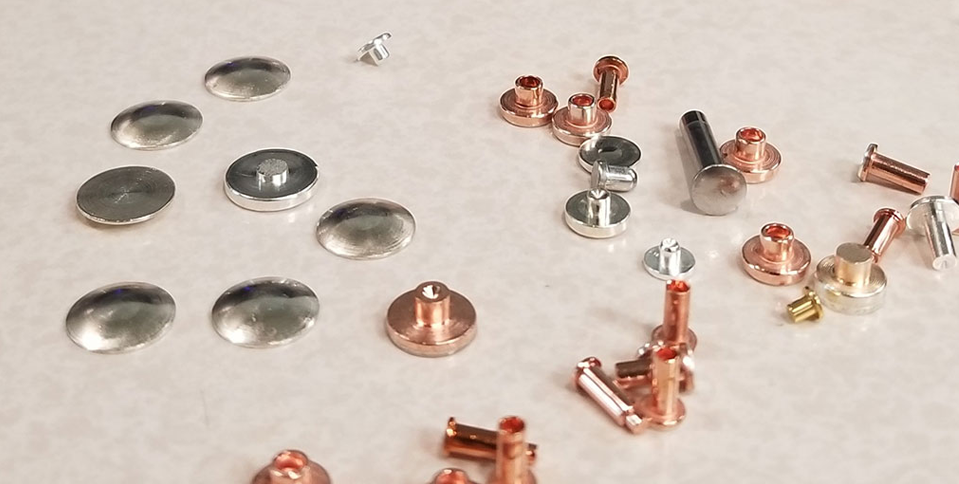-
Call us
262-947-0707
Call us
262-947-0707

Proper design and selection of materials can have a big impact on the longevity of your electrical contacts. Designing long-life contacts involves a number of important considerations and trade-offs, as well as iterative testing and sampling, to achieve an optimal performance for your electrical contacts.
Keep these factors in mind when performance and reliability are your top considerations for electrical contacts:
The forces an electrical contact is subjected to in an electrical-mechanical device can have a big impact on its life expectancy.
The main factors to consider are heat management, environments, arcing conditions and vibration.
Some OEMs manufacturers are primarily concerned about minimizing component costs, while maintaining the life cycle of the contact. In those cases, a bimetal electrical contact can be an affordable solution. Considering that silver now sells for $22 per ounce, minimizing its use in a contact is an excellent way to reduce cost – as long as it doesn’t compromise the performance and reliability of electrical contacts in a device.
The geometry and size of contacts found in electrical mechanical devices have a significant effect on performance and reliability during the service life of a device. This element of contact recommendations requires experimentation and testing to achieve the best combination of performance, duty cycles and cost.
The amount of heat and arc capacity an electrical contact can manage is directly related to its size, geometry and material selection. This needs to be well understood by engineers prior to moving from a concept or prototype contact to final production.
As you can see, many factors can influence the life of an electrical contact, from material, size and shape to application-specific factors, heat management and other environmental variables.
Don’t leave your switch contact design to chance. Norstan has an unparalleled depth of metallurgical and application knowledge that we can use to help you optimize the design of the electrical contacts in your switches for long, reliable life.
Why not contact us to discuss your next design challenge at (800).244.8338 or email us.